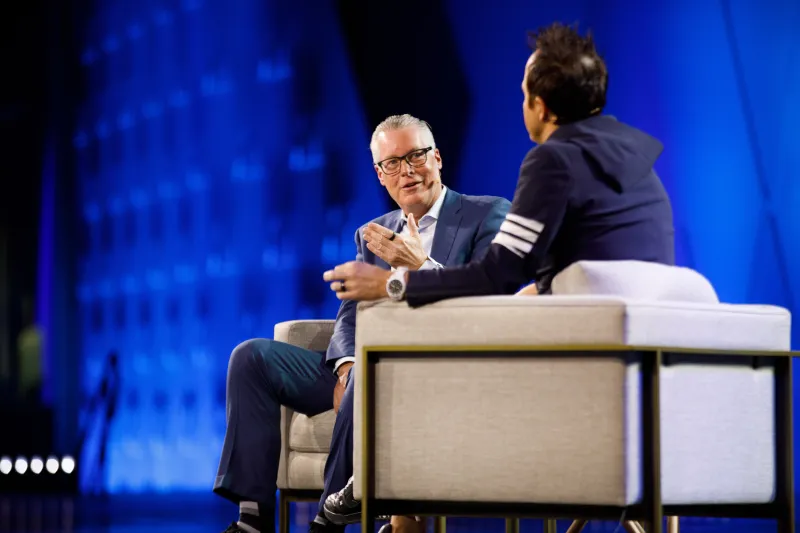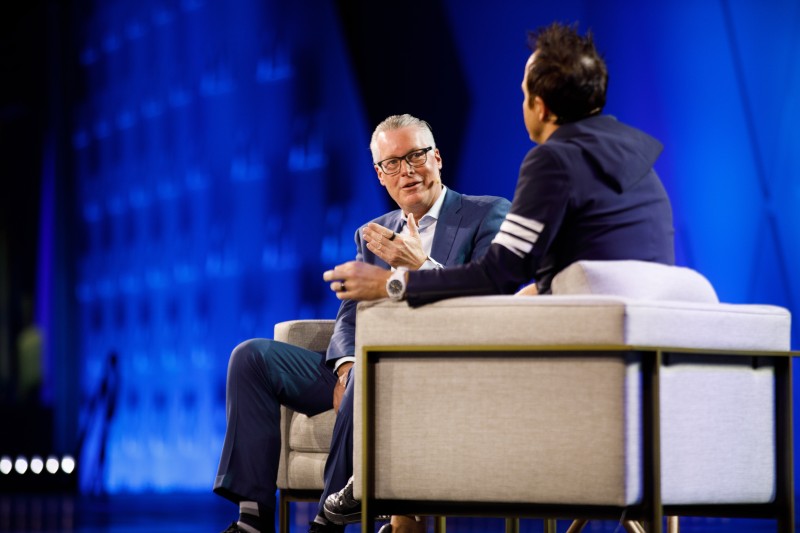Reposted from 1to1 Media
The power of connectivity was on brilliant display this month in Salt Lake City, where approximately 10,000 customer experience professionals gathered to soak up inspiration and new ideas to deploy upon returning home.
Delta Airlines CEO Ed Bastian’s announcement that in-flight wi-fi would be free for loyalty members went over with flying colors, drawing hoots and rousing applause.
YouTuber and former NASA engineer Mark Rober illustrated the power of connectivity with a science demonstration, releasing thousands of balloons at once to earn a spot in the Guinness World Book of Records.
Less flashy but perhaps more thought-provoking were the words from Nobel Peace Prize laureate Malala Yousafzai, who became an activist for girls education after surviving a gunshot wound to the head as a teenager.
“Take a pause,” Yousafzai said, “and think about how you are influencing and impacting the work around you and ensure you are making every decision with full responsibility and make sure it benefits and serves everyone fairly and equally.”
These three individuals from very different walks of life represent just a sampling of the roster of prominent speakers taking the stage at the X4 Summit, the experience management conference hosted by Qualtrics earlier this month. The event, held live after a three-year hiatus, is so named because it focuses on the four pillars of experience management: customer, employee, brand, and product experience.
CX and EX, not one or the other

Yousafzai, speaking on International Women’s Day, called upon business leaders to examine the culture they create to ensure technology career opportunities are available to more women from all backgrounds and that resources needed to flourish at work are accessible to everyone.
Improving the employee experience in this way ultimately enhances the customer experience as well. While some organizations favor CX over EX, or vice versa, it’s become clear the two have become inextricably linked.
“We put our people first so we can deliver an amazing experience for our customers,” said Bastian of Delta, named the top U.S. airline in 2022 by the Wall Street Journal, which scores airlines on seven operations and customer metrics. “We define our business as an experience business. Transportation is what we do,” he added. “Who we are is about the experience.”
Five years in the works, free in-flight wi-fi is now available on 80% of Delta’s U.S. fleet and rollout will be complete by year end. International in-flight wi-fi will follow. Despite all the innovative advances in travel, Bastian said in-flight wi-fi has been an abysmal experience for passengers. “We are closer to the darn satellites in the sky than the ground. Why isn’t it faster in the sky, right?
“We have to solve that because people want to be connected. And that’s what we do. We connect people,” he added. Next month, Delta SkyMiles passengers will enjoy another free perk: in-flight access to Paramount+, the premium video streaming service. In two weeks’ time, 2 million people linked their Delta and Paramount accounts, Bastian said.

Another speaker who underscored the intersection of CX and EX was Penny Stoker, talent leader, executive functions, at global consulting firm EY.
Real-time intelligence
“It’s about putting humans at the center. How do we talk to our employees and how do we foster an environment so they can bring their whole selves to work?” Stoker said during a briefing with analysts, media, and investors. “So often, we design something that works for HR or finance or technology and guess what? It doesn’t work for employees.”
“How do we change that so our employees have a consistent journey so they can work with our clients” to deliver an exceptional experience.
That same sentiment —viewing CS and EX in tandem—spills into other business sectors.
“It’s our vision to bring those data together because in healthcare, the stakes are different with healthcare worker burnout,” said Alpa Vyas, chief patient experience officer, Stanford Health Care. “Our ability to keep our workforce, whether physicians or front-line staff, is really important. If that doesn’t happen, that impacts the experience for our patients. These things are all intrinsically linked.”
While Vyas mentioned a bright spot—she called the ability to gather feedback and respond in near real-time, even before a patient leaves a clinic, a “gamechanger”—there’s much room for improvement. “Healthcare has moved from the 19th Century to the 20th Century when it comes to the experience,” Vyas said. “We have a long way to go and lots of learning to do.”
Acting on developing trends as they surface
Michel Feaster, global head of product marketing and chief product officer of research at Qualtrics, said real-time access to developing trends delivered in a dashboard format enables decision-makers to seize opportunities to improve the experience as they surface.
In financial services, for example, real-time data about behavioral trends would reveal to business leaders that high net worth customers are switching banks right now, because they are chasing high interest rates, she said.
For healthcare, Feaster said timely intelligence around frequency of patient visits, communications channels with highest engagement, and other benchmarks can provide cues to guide next moves to enhance the experience.
Qualtrics Chief Medical Officer Adrienne Boissy, a practicing neurologist, jumped in to suggest where improvements can be made in electronic health records (EHR) systems: “How do patients shape the EHR design?” she told Customer Strategist Journal. “Why are physicians in the EHR and not with their families? Why is the physician in the EHR at 10 o’clock at night?”
Numerous X4 Summit presenters underscored the importance of being proactive, to capture, interpret and respond to behavioral signals quickly.
“The days of having to ask customers about their experiences are over,” said Qualtrics CEO Zig Serafin. He said Qualtrics’ Experience iD (XiD) database has captured 11 billion records from customer interactions across numerous channels, showing preferences and what consumers are likely to want next. The intelligence helps companies identify and resolve points of friction while capitalizing on growth opportunities.
Empathy, genuine empathy
All the juicy data in the world only goes so far. Presenters said business needs to bring humanity to the experience and that means acting on data intelligence with empathy.
In the contact center, Qualtrics conducted research on the presence and absence of empathy during customer interactions. “We found that agents demonstrating empathy—and the person feeling that impact—has twice the impact on loyalty than shorter wait times. People would rather wait longer on hold to get an empathetic experience,” said Brad Anderson, president of products and engineering at Qualtrics.
Empathy is equally crucial to the employee experience.
“Empathy is the term of the day,” said Johnny Taylor, CEO of the Society for Human Resource Management (SHRM). “Empathy is the No. 1 thing employees want from us.”
This is a shift from three years ago, with the onset of the pandemic, when employees were looking for sympathy given all the difficulties, disruption, and despair. Now they’re saying: “I don’t want your sympathy. When you talk to me, think about what I am going through.”
Taylor went on to say business needs to be aware employee psyche is a moving target and this matters in a challenging labor market.
“The war for talent is real and it is worsening,” Taylor said. “The No. 1 issue is wage inflation. Your people want more and as we head into an economic slowdown, your customers don’t want to pay more. We’re in for a collision.”
The average 2022 college graduate expects a $104,000 salary in a first job, he said, a figure that’s nearly double the actual salary of $55,000. “They are pissed because they are working for half what they think they should be getting from you.”
There’s good news, Taylor was happy to offer. For all those employees who left their jobs during the pandemic, 80% regret quitting. “Boomerang is real and it’s an opportunity,” he said, and business would be wise to welcome back high-performing employees who left on good terms.
He suggested checking in with newly departed employees after 30 days to ask: Are you happy in your new job? Then, check in after 90 days to ask if the new employer kept their word about job-related promises. Then, after 120 days, check in to ask a former employee: Do you want to come back?
All photos courtesy of Qualtrics















